- News
- Reviews
- Bikes
- Accessories
- Accessories - misc
- Computer mounts
- Bags
- Bar ends
- Bike bags & cases
- Bottle cages
- Bottles
- Cameras
- Car racks
- Child seats
- Computers
- Glasses
- GPS units
- Helmets
- Lights - front
- Lights - rear
- Lights - sets
- Locks
- Mirrors
- Mudguards
- Racks
- Pumps & CO2 inflators
- Puncture kits
- Reflectives
- Smart watches
- Stands and racks
- Trailers
- Clothing
- Components
- Bar tape & grips
- Bottom brackets
- Brake & gear cables
- Brake & STI levers
- Brake pads & spares
- Brakes
- Cassettes & freewheels
- Chains
- Chainsets & chainrings
- Derailleurs - front
- Derailleurs - rear
- Forks
- Gear levers & shifters
- Groupsets
- Handlebars & extensions
- Headsets
- Hubs
- Inner tubes
- Pedals
- Quick releases & skewers
- Saddles
- Seatposts
- Stems
- Wheels
- Tyres
- Health, fitness and nutrition
- Tools and workshop
- Miscellaneous
- Buyers Guides
- Features
- Forum
- Recommends
- Podcast
OPINION
Sustainable Gravel: A car-free cycling trip to the Isle of Wight
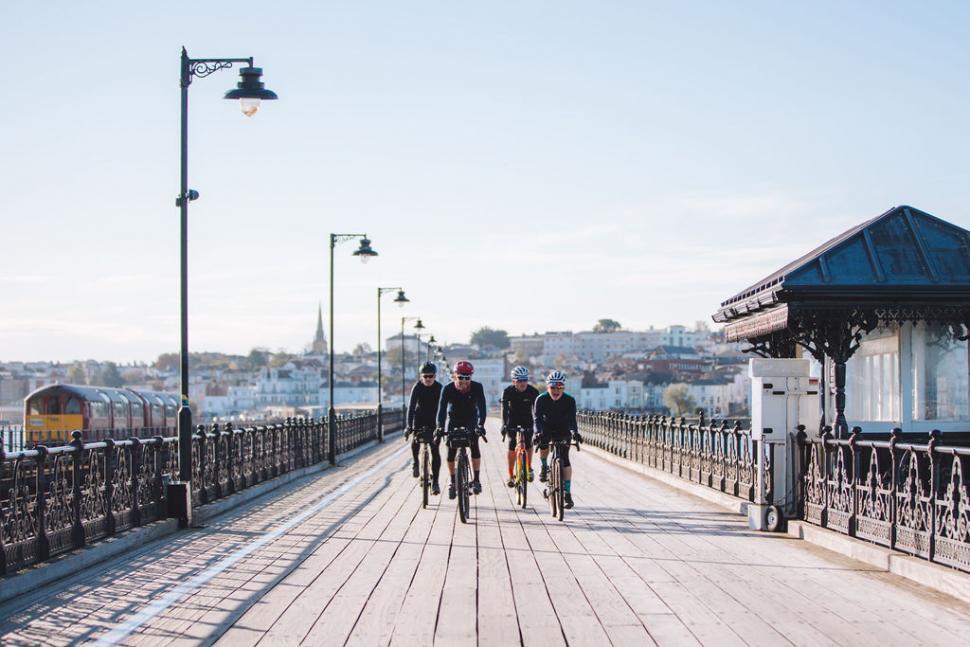 isle-wight-car-free-campaign-pier-photo-james-cripps
isle-wight-car-free-campaign-pier-photo-james-crippsIf you’re on a ferry, you’re going on holiday… them’s the rules. Even if that ferry journey is only 20 minutes long it still counts as a holiday, and the way things are going right now - and for the foreseeable future - it’s about all the holiday any of us in the UK could be allowed. You don’t even need a passport or visa of kind.
>VecchioJo: "No one cares how far you rode your bike"
The Isle of Wight, it’s just over there (points). You can see it from the mainland but it’s a totally different world, and it’s not just because you have to board a ferry (or hovercraft if you’re fancy) to get there. It’s like the UK, but nicer; a lot quieter, a bit quaint, like you imagine the 1950’s might have been (maybe). There’s a bunch of us here to see that you can have a good day out without the use of a car under the invite of an active travel campaign on the island; but as at least half of us don’t even own a car they might be preaching to the converted, so we’ll just be going for a nice bike ride anyway and seeing just how great the Isle of Wight is for that sort of thing!
As part of the car-free ethos, we’ve all done our best to travel green. I’ve come by train and from where I live it’s easy; ride a few minutes to the station, trundle along the south coast, eat breakfast on the train and watch the sun come up. I spent my formative cycling years using the railways to travel further afield, so using them as a valid means of transport is nothing new to me (call it multimodal travel if it helps). This is all despite the best efforts of variable timetables, bus replacement services, sloppy service and the removal of the guards van… it’s fine, I love sitting by the toilet and trying not to make eye contact with the new occupant as the door leisurely judders to a close.
Another of the day’s riders is coming from Bristol and has had a similarly simple trip, using the journey as convenient nap time because of the early start. Off at Portsmouth Harbour and it’s a 30 second walk from the train to the boat to the island. The ferry terminal is right at the end of the platform, in a rare (and welcome for the UK) piece of decent joined up infrastructure. Once on the ferry, there’s a large covered area dedicated for bike storage with enough room for a dozen or so machines; no one telling you “No, you can’t put that there”, no tutting, it’s all refreshingly fuss-free and bike passengers don’t have to pay. It doesn’t feel like England, it feels like a holiday. The other side of the Solent is the same; collect your bike, walk off, ride your bike away down the pier. Why can’t it always be this casual? Take the ferry to Ryde and you get to ride down a pier as well, and if you time it right an old London Underground train will clunk along the tracks beside you. Did I say it’s like a holiday?
The organiser of this jaunt and our guide for today is Tim Wiggins, a Wight local who knows every inch of the island. When he worked on the mainland he clocked up well over 5,000 miles a year commuting all the different ways from home to the ferry terminal and back. He’s also a fan of longer rides, so he’s covered every inch of the Isle of Wight on and off road to cram his miles into a confined space. As a result he has that inquisitive nose common to those bored of the usual route, and an unparalleled grasp of where you can roll a tyre around here.
> VecchioJo: "I don't know where I'm going"
Tim’s knowledge bears fruit as within a couple of minutes of hellos, we’re scuttling down a leaf-littered path between the houses. More than once during the day he’ll suddenly turn down a path that only he and a rabbit know, and our handlebars will be brushing the undergrowth both sides; I love this kind of riding.
Our route will traverse every type of surface you could imagine, which is why the gravel bikes we’re all on make the perfect machine. There are a couple of moments where fatter tyres and flat bars might be nice, and then times where something thinner and faster would be better, but that’s what makes it fun. Road to bridleway, to track, to field, to singletrack, to concrete road, to sandstone, to grassland, to actual gravel and all the way back again in no particular order, then repeat for the whole day. Without the use of a GPS or Tim’s local knowledge it would be impossible to recreate the route as it dives and switches, zigs and zags and meanders across the island seemingly at random, but with the precision of Tim’s detailed mental map.
While we were all on fat-tyred drop bar bikes so we can fully explore all the hidden corners of the Isle of Wight, it works just as well if you want to dedicate your ride to either tarmac or dirt, and I’ve enjoyed it more than a few times on both. The Wight Riviera Sportive was a grand day out and stands testament to the island being a fantastic road bike destination. The roads are mostly quiet and there are more than enough pokey hills to make it interesting for your legs; the winch up Brightstone Down still lingers in my memory. Spending a weekend there on the same bike but merely swapping tyres to do both an off-road and road event was a gloriously silly idea, and hunting the island in a mild panic for an evening meal still lingers in the memory.
The Isle of Wight is taking active travel seriously. It sees over 2.5 million visitors a year, but is simultaneously an UNESCO Biosphere Reserve. Over half of the island is an Area of Outstanding Natural Beauty, so it has to find a way in which to juggle these conflicting interests. Getting people to leave their vehicle on the mainland and have the infrastructure in place to make car-free travel a viable alternative when visiting the island is one way. If you’re not on a bike there’s The Island Line railway that operates between Ryde Pier Head down the east side of the island to Shanklin, or you can hop on the Southern Vectis bus service. You can also walk the island’s vast network of paths, although it’s slower than by bike. Taking it slow and being able to take in, experience and savour all the things you’d otherwise whoosh past in the car is a large part of the campaign.
The island is dotted with picturesque villages, so there’s plenty of opportunity for snack stops. Being both a proper local and a cyclist, Tim knows exactly where to head for a coffee and a Belgian bun the size of your 42-tooth cassette for elevenses to keep us going until our date at the Garlic Farm in Newchurch for lunch, home of the island’s most famous export (not counting Mark King from Level 42). The fondant fancies from the minimarket in Niton are something to be in awe of too; although I can recommend not stuffing them into a back pocket for later as they don’t travel too well.
The general tranquil atmosphere of the island also makes it feel like stepping back in time. There’s definitely a different pace to life, and you can see why there are benefits to maintaining and encouraging this feeling and actively discourage cars; it’s a significant part of its charm. It’s a feeling only enhanced by Tim’s local knowledge, keeping us away from any tourist hotspots which can get hectic, and are themselves a very good argument for minimising road traffic. There are a few times where we have to pass through the island’s popular and populated areas, and they’re a little jarring to say the least after the serenity of the back ways. Our average speed picks up here.
For a relatively small area the Isle of Wight certainly packs in a variety of terrain, and it’s never a tedious ride. Wait five minutes and you’ll be riding over something different; from sneaking along dark sunken lanes, to rising into the broad blue skies across swooping green tops of Downland, there’s not much chance of getting bored. It’s definitely not flat either, and line of Downland along the bottom edge has enough in it to keep your legs occupied. The tarmac climb out of Ventnor onto St Boniface Down is particularly knee crunching; so it doesn’t help to be told that Tim spent nearly 15 hours everesting up here, and he did it from sea level all the way up to the top rather than joining it halfway up as we did.
We fall out of the trees into The Garlic Farm near Knighton for lunch, and as you’d expect everything is garlic-based (even the beer). Except, that is, for the chickens or the albino peacock that are wandering around the grounds… although for some of them you feel it’s only a matter of time. We talk about the benefits the bulb can bring to a cyclist, the Spitfire wheeling overhead, and the three-day gravel weekend that Tim is organising for late September, pandemic situation-pending. Based at the farm, the inaugural The Wight Gravel Prestige is an event designed for groups of four, housed in their separate yurts, who will be treated to what basically amounts to a few days of guided gravel riding and garlic-infused eating. As we dip our chips in garlic mayo, we all agree this is a good idea. Before we leave, I wish I’d come with some on-trend bikepacking bags to fill will garlic-related produce from the shop. I could stuff a handlebar bag with just a selection of bulbs, but I’d need a different bag for all the tracklements and snacks, and maybe a beer for the journey home.
As cyclists we’re probably a bit more aware about sustainable transport and active travel than most, but we can still be guilty of loading up the car with the bikes to go to events, races or just to drive somewhere different for a ride. We can, though, all make different choices and small changes that can all add up to something bigger and beneficial. The past year or so of restrictions has taught us that we don’t need to go far to have fun, and what was once considered normal now looks a little out of step with the way things should be. Lots of hotels, B&Bs and tourist attractions across the Island are members of the Visit Isle of Wight’s Green Star scheme, a campaign to reduce carbon emissions by promoting the use of sustainable transport, so they’re serious about making a positive difference. Members are awarded a bronze, silver or gold star depending on their eco credentials, with the latter possibly providing a bike maintenance station, an electric vehicle charging point or even a discount if you arrive on foot.
Our ride of about 100km only really touches the eastern side of the island, and thanks to the wiggly nature of the route it feels like we’ve not been very far; yet it also feels a very long way, the constant variation of terrain giving it the illusion of travelling through many disparate places. We roll back into Ryde as the sun dips round the other side of the island, and if we’d timed it better there would be a chance to grab some fish and chips on the seafront; but we have to keep rolling along the pier to the waiting ferry. It continues as we walk up onto the platform where our Bristol rider trots straight to their train. I have a five minute wait for mine, just enough time to crack open a garlic beer.
This ride took place during the easing of lockdown in summer 2020.
Jo Burt has spent the majority of his life riding bikes, drawing bikes and writing about bikes. When he's not scribbling pictures for the whole gamut of cycling media he writes words about them for road.cc and when he's not doing either of those he's pedaling. Then in whatever spare minutes there are in between he's agonizing over getting his socks, cycling cap and bar-tape to coordinate just so. And is quietly disappointed that yours don't He rides and races road bikes a bit, cyclo-cross bikes a lot and mountainbikes a fair bit too. Would rather be up a mountain.
More Opinion
Latest Comments
- wtjs 4 hours 57 min ago
it seems that most places just rely on sufficient policing to reduce the issue...
- Matt Page 5 hours 41 min ago
Many manufacturers, including Scribe, can give you methods to reduce the noise level. On Scribe, and other ratchet designs it's usually just adding...
- wtjs 6 hours 19 min ago
It wouldn't work at all where wtjs lives...
- Sriracha 6 hours 35 min ago
Pretty sure AI could skim through hours of footage in a few seconds to identify suspicious events. Of course someone in authority has to care in...
- chrisonabike 6 hours 43 min ago
Bonsai samurai? Or is it just a case of "they seem to get smaller every year"?
- IanGlasgow 7 hours 46 min ago
Sorry to see Endura struggling. They're based in Linvignston, not Edinburgh, which puts them very close to where I grew up....
- mdavidford 9 hours 27 min ago
I dunno - seems like it's coming round on a regular basis...
- Rich_cb 11 hours 9 min ago
The mistake is to focus on the US....
- chrisonabike 11 hours 21 min ago
I mean it seems silly to complain in detail when we're firmly in the territory in the UK of "you will have to live with this the rest of your life ...
- eburtthebike 13 hours 52 min ago
I thought students were supposed to be intelligent?
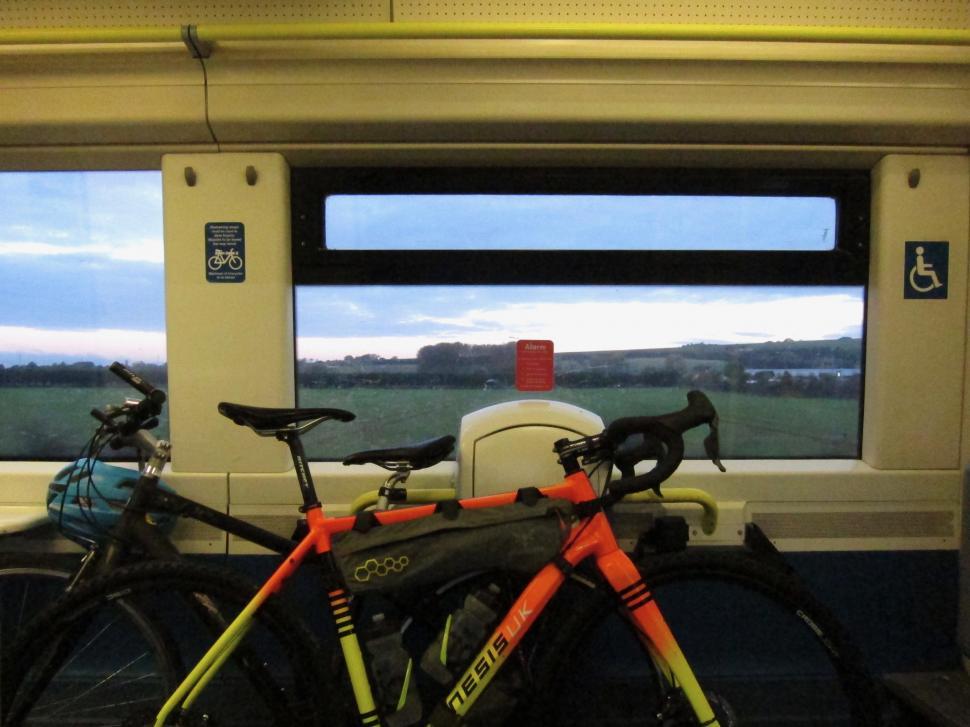
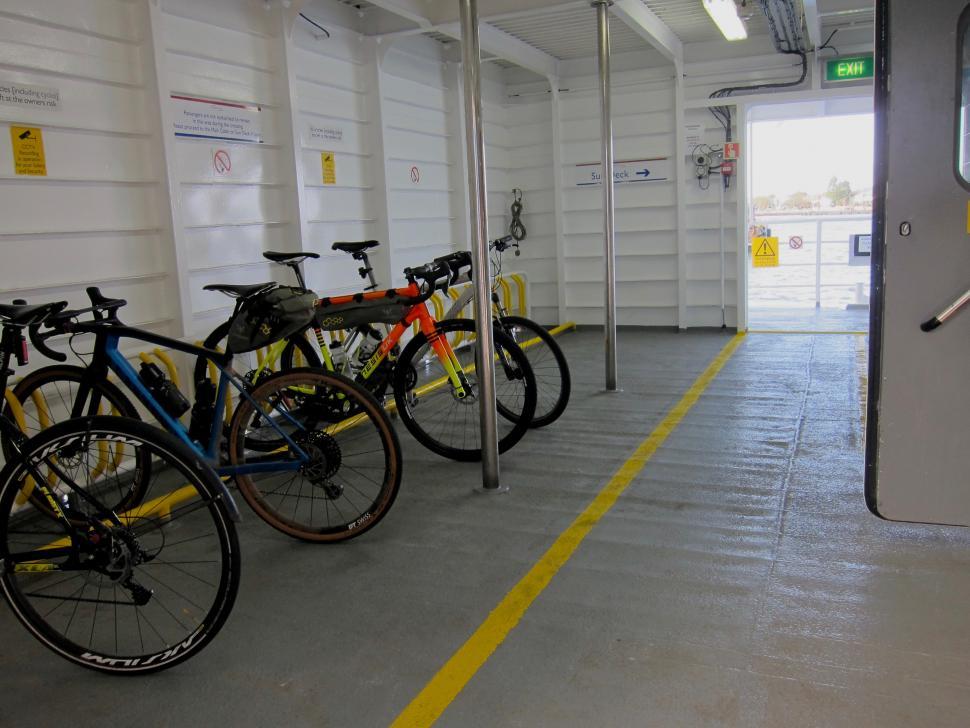
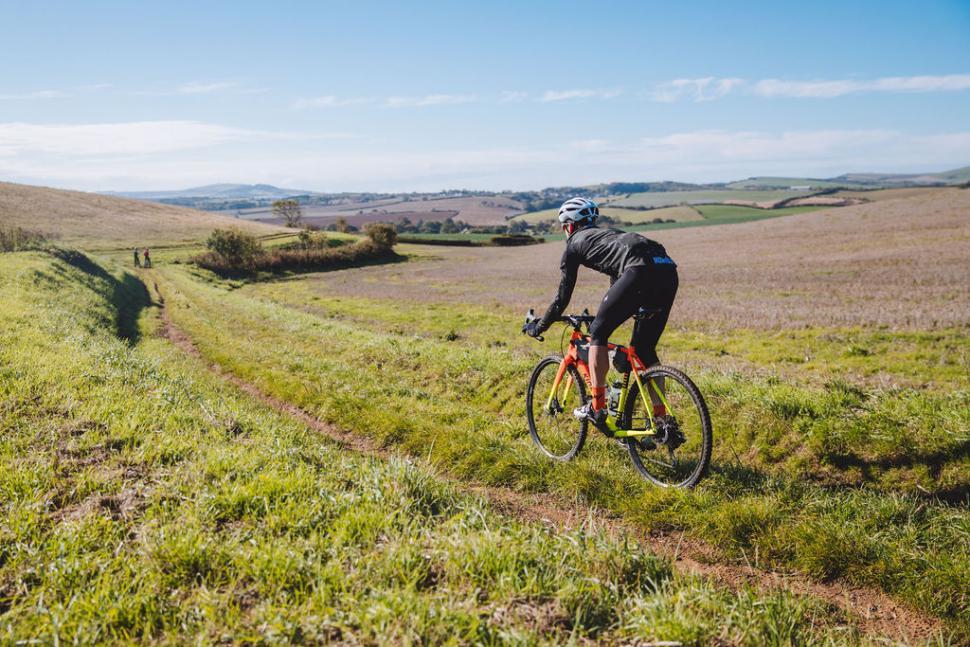
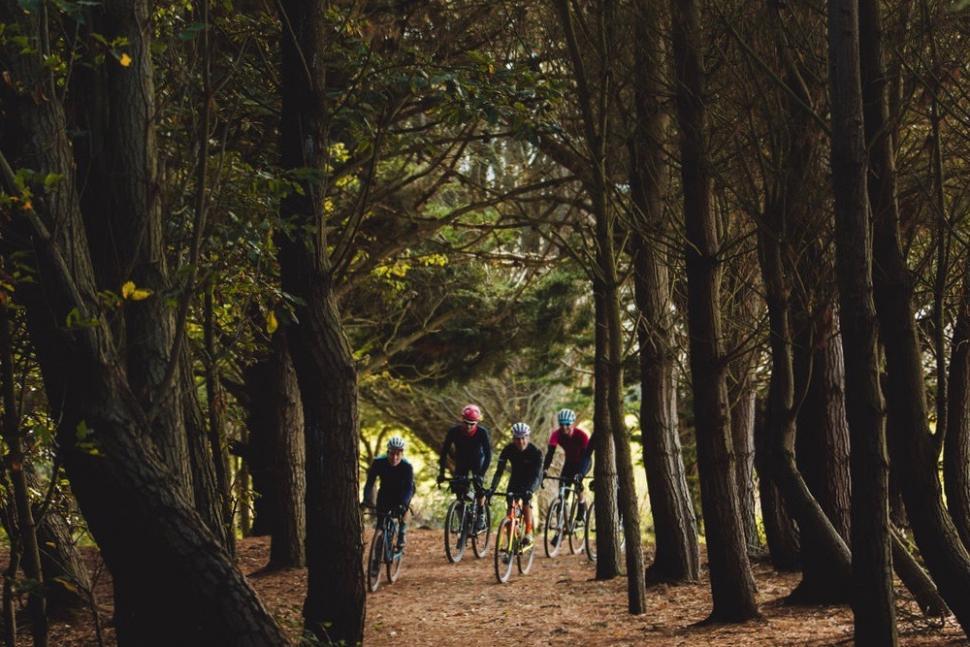
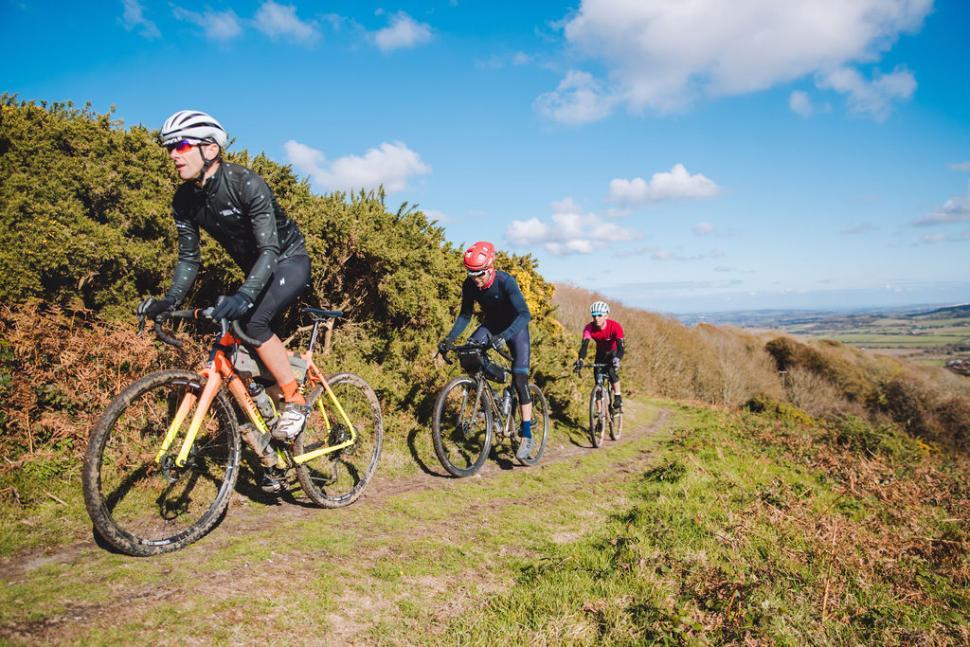
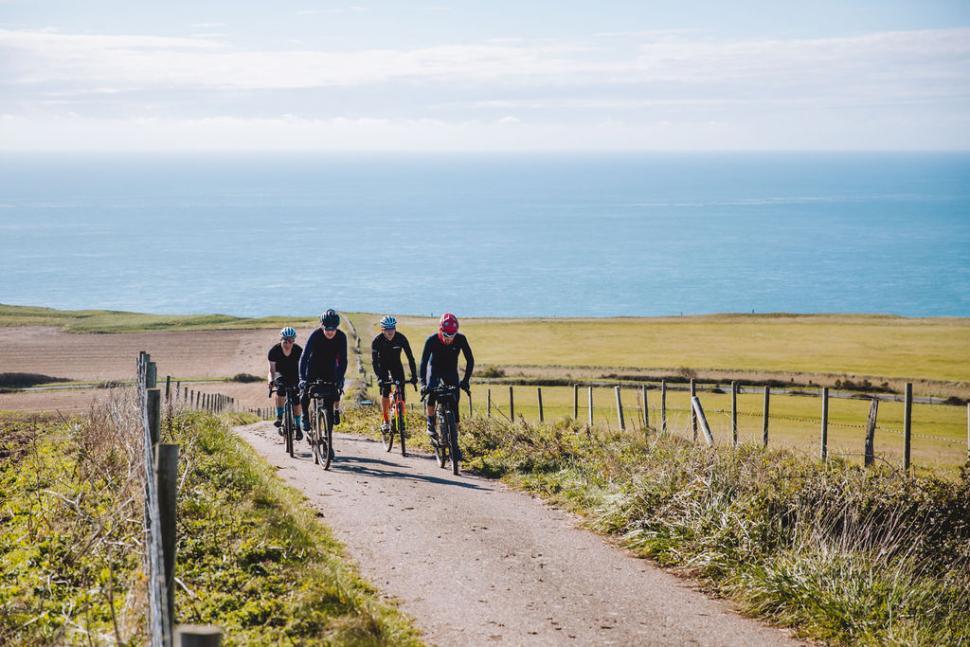

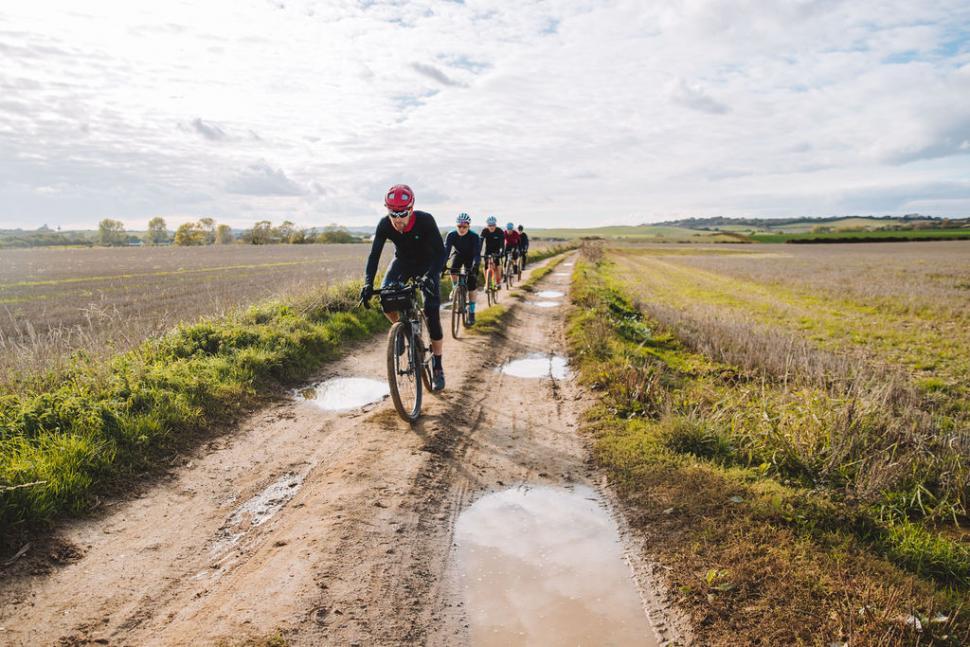
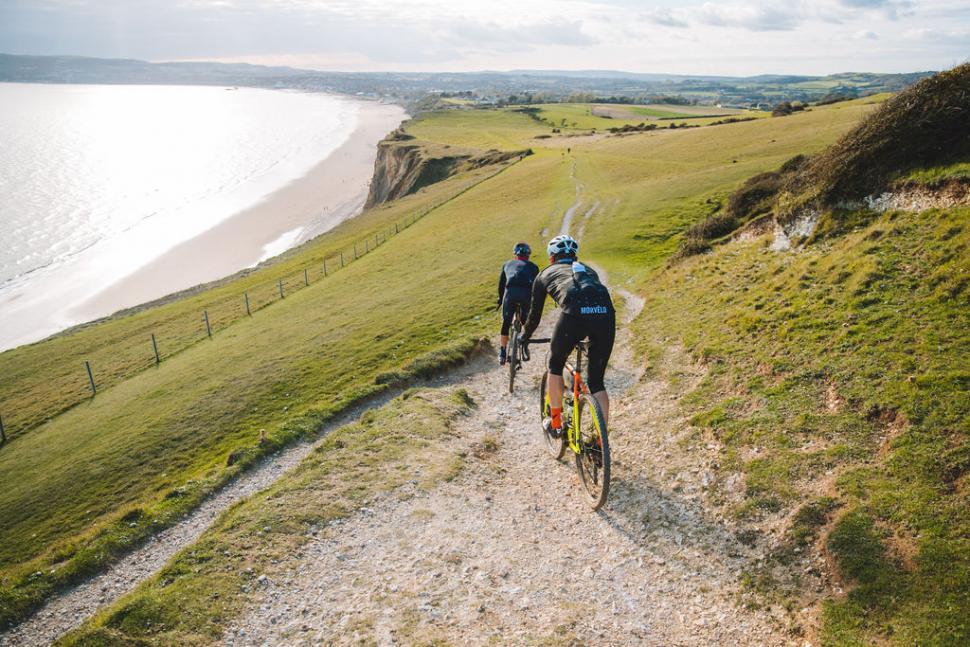
Add new comment
11 comments
I spent a glorious 12 months or so living on the IOW, admittedly many moons ago in the late 80's, working on the eastern tip of Portsmouth, just off the Southsea sea front.
A daily commute on the Ryde to Southsea hovercraft where my trusty old "shopper" would be waiting exactly where I'd left her for the 5 minute cycle down Eastney Esplanade.
I try to get back to the island annually, it rivals pretty much anywhere else I've been for it's variety of cycling, quiet lanes and friendly locals.
Dr Emmet Brown built a time machine out of a delorean, but wightlink used a ferry. Step on board, and find yourself 30 years in the past when you get off.
Or 30 years in the future if you come from the Island
its something Ive wanted to do for a few years now as the island looks perfect for cycling on, and maybe when things get back to more normal, it will feel possible again, but not being at all adept at bike packing Id still want to take my car with me, even if I didnt intend driving around the island that much with it, just because of the stuff Id want to take and bring back.
If you're doing a multiday trip you could take a backpack and leave it at your accommodation during the day while you explore the island.
Sounds like bicycle heaven ! I'm planning to do this trip during the summer on mine and my wife's gravel bikes, with the added complication of me towing the two little ones in a chariot.
Are the island routes mainly off road/gravely? I like the idea of traffic free routes, but anything more than light gravel will be a challenge.
I did the round island route a while back and some of the road links would not be fun with a kid trailer (busy, fast and steep). But there are some really great, smooth gravel/tarmac fairly flat trails. This website looks good for some ideas...
https://redsquirreltrail.org.uk
Red Squirrel trail is about as flat as it gets on the island, and is trailer friendly (it's an old railway line). Nice route with plenty of wildlife and if it's survived the pandemic there's a cycling cafe about halfway along.
As the article states it's proper lumpy from Shanklin to Ventnor all the way to Blackgang - Niton Down is a long old drag and Cowleaze Hill coming out of Shanklin is probably the toughest climb on the island.
Prevailing winds are westerly, so consider riding it anti-clockwise. We love the west of the island, it's perfect for a non-touristy holiday (Shanklin & Sandown are rammed in the season and choked with traffic).
It isn't even in the top ten sir. Try the climb from Ventnor seafront to St Boniface Down, mentioned in the article, it's a killer with the steepest bits at the top. When Tim Wiggins did his 'Everest ' there he climbed it 38 times, which I still find inexplicable. He is a true athlete.
( And I often tell people that I accompanied him on his attempt; even if I sometimes fail to mention it was for just one lap.)
Another horror ascent is Byway GL48, about a mile north of Ventnor. Its tarmac is coming unstuck, not due to wear but because of gravity.
There are more but I'll leave you to find them .....
Interested/pleased to see dedicated bike storage on the Portsmouth route, that's not the case on the Lymington - Yarmouth route. It never used to be a problem because you could stay on the car deck with your bike, but that's no longer an option (well, last time I checked in 2019)
you worried about someone jumping overboard with your bike? Nowhere for it to go during the crossing.
I'm not to keen on wheel benders at the best of times, but it seems like a very odd choice on a ferry that will (presumably) be rocking about a bit.
On a tangential note... I was very please on my last visit to the Lidl near work, they've finally taken the hint* and replaced the wheel benders with sheffield stands.
* the hint being, everyone, without fail, locked their bikes to some part of the bike shelter and left the wheel benders untouched.